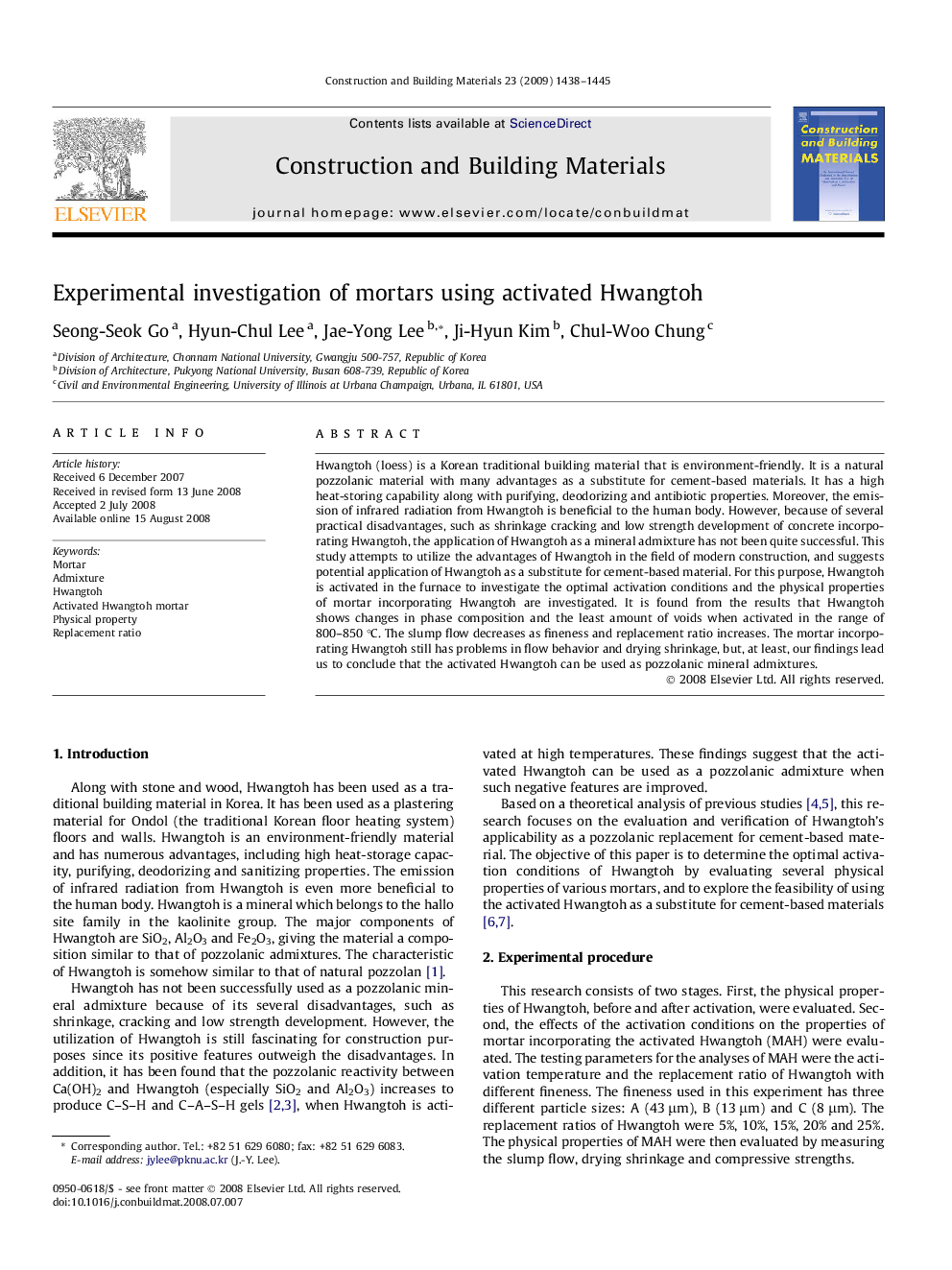| Article ID | Journal | Published Year | Pages | File Type |
|---|---|---|---|---|
| 260308 | Construction and Building Materials | 2009 | 8 Pages |
Hwangtoh (loess) is a Korean traditional building material that is environment-friendly. It is a natural pozzolanic material with many advantages as a substitute for cement-based materials. It has a high heat-storing capability along with purifying, deodorizing and antibiotic properties. Moreover, the emission of infrared radiation from Hwangtoh is beneficial to the human body. However, because of several practical disadvantages, such as shrinkage cracking and low strength development of concrete incorporating Hwangtoh, the application of Hwangtoh as a mineral admixture has not been quite successful. This study attempts to utilize the advantages of Hwangtoh in the field of modern construction, and suggests potential application of Hwangtoh as a substitute for cement-based material. For this purpose, Hwangtoh is activated in the furnace to investigate the optimal activation conditions and the physical properties of mortar incorporating Hwangtoh are investigated. It is found from the results that Hwangtoh shows changes in phase composition and the least amount of voids when activated in the range of 800–850 °C. The slump flow decreases as fineness and replacement ratio increases. The mortar incorporating Hwangtoh still has problems in flow behavior and drying shrinkage, but, at least, our findings lead us to conclude that the activated Hwangtoh can be used as pozzolanic mineral admixtures.
